When you have enough money, you can develop and market your SaaS startup ideas faster to leave competitors behind. But what if you are not a millionaire and do not have an angel investor bankrolling your idea, but are actually earning your living with a day job? Should you forget about launching your project, or should you try to find a way to bring it to life? Here, we have collected the practices that may help you bootstrap your SaaS ideas without venture capital.
Reasons for SaaS Bootstrapping

The expression ‘pulling yourself up by your bootstraps’ emerged in the 19th century and came from the boots that were pulled on with the help of straps. As an idiom, it means to do something (often hard work) on your own without asking for outside help.
Today, in a business sense, ‘bootstrapping’ stands for starting a business using the founder’s own funding and effort, doing everything (development, marketing, and distribution) by the entrepreneur themselves.
Bootstrapping in software development is not a new phenomenon, either. We all are impressed and inspired by the success stories of Basecamp, GrooveHQ, MailChimp, and many more SaaS leaders that were founded around a decade ago and are still icons of bootstrapping. It was hard to grab an investor or get accepted by an incubator ten years ago, and it still is! But nowadays, SaaS development is riding the tide and bootstrapping has become much easier due to a greater variety of development and marketing tools.
Here are some of the reasons to build a SaaS business with bootstrapping today:
- The increasing need for SaaS apps in every area of business (rise of Vertical and Micro-SaaS). The SaaS market was predicted to reach $1,016.44 billion by 2032.
- Software development and marketing are getting more affordable due to the emergence of new technologies, programming language frameworks, and distribution channels.
- The way has already been paved and described in detail by pioneers of SaaS startupers in books, blogs, and podcasts. Just adapt and use this knowledge!
5 Actionable Steps for Successful SaaS Bootstrapping
Of course, great SaaS business ideas depend on financial support. But what to do if there are no investors on your radar?
Take it easy, you are not alone. According to Investopedia, around 80% of startup funding comes from the founders' personal savings and the average startup capital is about $10,000.
Let’s look at the most common sources of funding for bootstrapping a startup:
- Founder’s personal savings
- Family assets
- Monthly income from a day job
- Personal credit card debt
- Government subsidies for entrepreneurs as cash payments or tax breaks
- Selling of personal assets
- A loan from a bank, relatives, or friends
- Crowdfunding
Here are some other ways to help you minimize the entrepreneur’s expenditures:
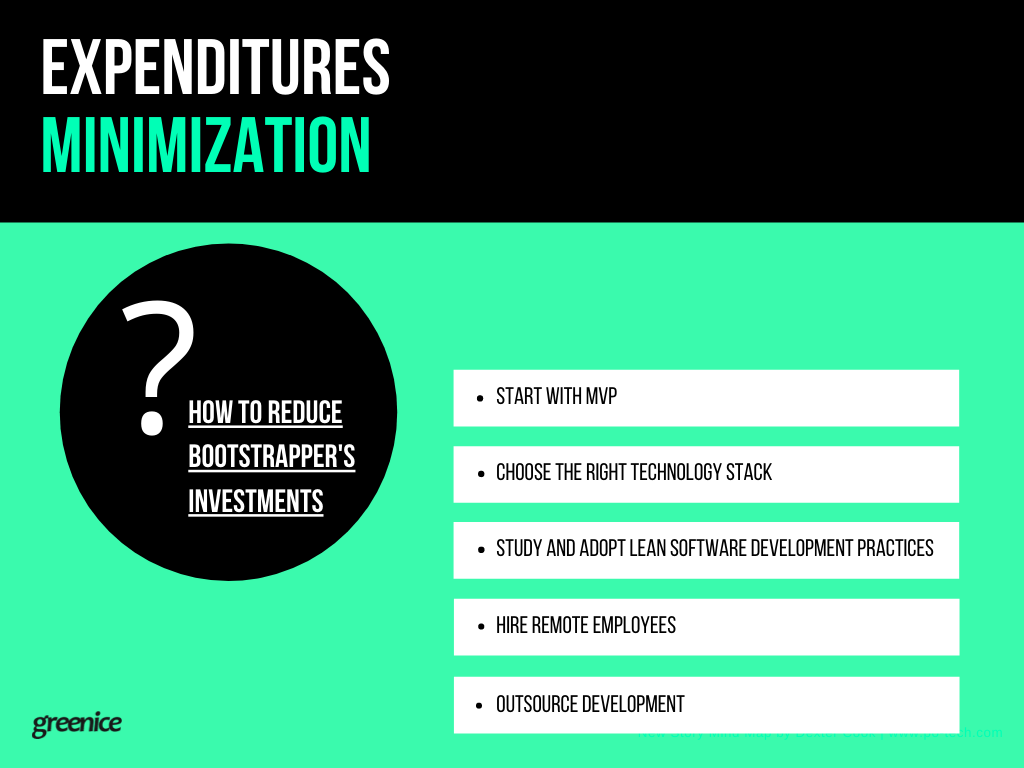
Let us explain the benefits of each of these methods in more detail.
1. Start with MVP
One of the biggest reasons for startup failure after ‘Running out of money’ is ‘No market fit.’ If nobody cares about what your product does, there is no need to waste money on its development. But to understand if there is a demand for your solution, you need to show some product, even in its simplest version, and let users play with it.
While sharing the GrooveHQ startup creation story, Alex Turnbull confesses that they spent more than $50,000 and six months on market research and the development of a multi-featured website:
“We had a wishlist of features that we thought would add value to our product. The only problem is, that “wishlist” turned into a “must-have” list, and it grew each time we thought of something we liked. Just like the acquisition setback, we lost sight of what we had set out to do: build a simple, elegant solution that wasn’t like the existing, cumbersome products. Nonetheless, slowly but surely we added feature after feature, pushing our launch date back with each one.”
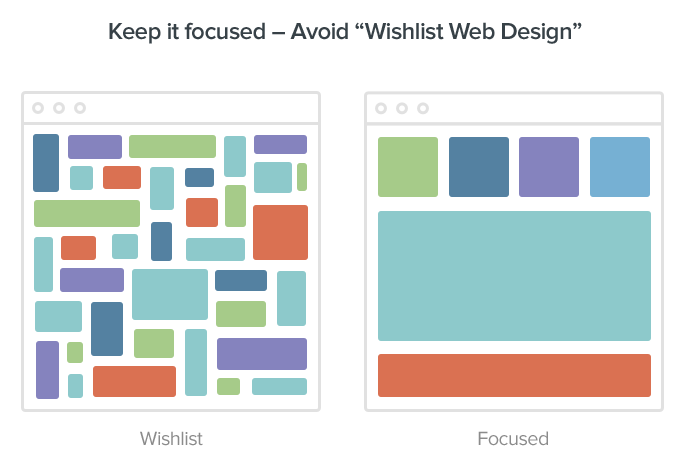
Such stories help us not to step on the same rake twice. Instead of wasting months on the perfection of your SaaS, start with key features and deliver them fast. Eric Ries with his ‘Lean Startup’ methodology wrapped it into a loop framework 'Build - Measure - Learn' and suggests starting with a minimum viable product.
Minimum viable product (MVP) is the core functionality that is enough for the first launch to test the assumptions and get customer feedback for further improvements and zooming out. As the main idea of a new product is to ‘solve the problem,’ you should focus strictly on problem-solving and put aside the less important ‘nice to haves.’ Come up with a product that completes definite tasks and proves it’s worth paying for. (Find more inspiration in Greg McKeown’s book “Essentialism: The Disciplined Pursuit of Less”.)
At Greenice, we always recommend our clients create an MVP and then, after getting some initial feedback from the users, gradually improve and scale it up.
The benefits of starting a SaaS business with MVP are:
- The product will be ready for the market in months, not years.
- You can test your hypothesis before spending too much time and capital.
- Creating minimal functionality is cheaper as the development time is shorter and fewer resources are needed.
- The MVP has fewer defects than in a multi-functional application.
- The solution’s value is more clear to users when they are not distracted by a variety of additional features.
You can create Software as a Service MVP in one of the following ways:
1. A single feature product. It is important to identify the core feature that solves the main problem. All the rest should be thrown away or put aside for the next iterations. The benefit of this approach is that users are not distracted by extra features, and are able to evaluate the main purpose of the SaaS.
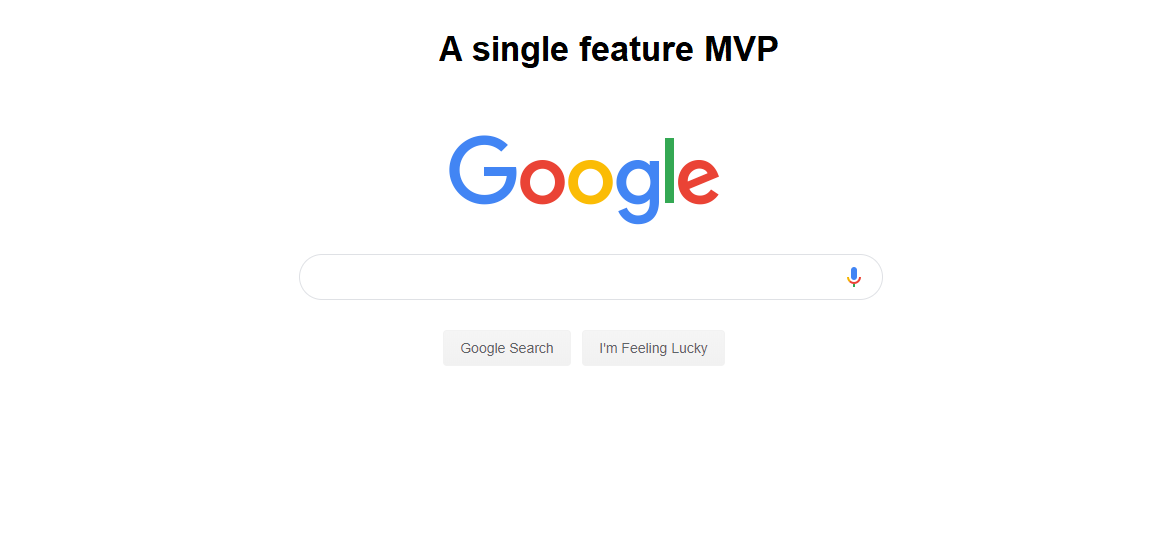
2. Concierge type. This approach requires little to no programming. All you need is to contact your potential customers, interview them, and create a Landing page. The Landing page will describe your service, and offer them to sign-up or order the service. The rest can be done manually (as long as you can cope with the work volumes without automation) until you prove the viability of your startup idea. An example is ‘Food on the Table’. The purpose of this app was to learn the customers' preferences and create personalized meal plans with recipes and product lists that would save time and money.

3. Wizard of Oz. This is very similar to the Concierge type. The difference is that here you create a visually ready-to-use (but not yet developed) product while behind the scenes you complete all services manually. This approach was used by Zappos, an online shoe retailer. At the start, its founder took photos of shoes in the offline stores, uploaded them to a simple website, and when someone made an online order, he went to the shop, bought the shoes, and personally delivered them.
4. Landing Page.
You may start with a landing page that will inform visitors of your services and allow them to subscribe. This will build a database of user emails. Buffer, a scheduling app for social media posts, created a two-page MVP with the ‘Plans & Pricing’ button on the first page. Every time someone clicked on it, they were asked to type their email to be notified when the product was ready. This way, Buffer was able to validate the idea (people added their emails which meant they wanted the app) and collected potential customers' contacts before launching the product.
Some SaaS product ideas are so cool that just a simple explanation video may inspire a flood of interest. For example, Dropbox presented its product to its early adopters with a video.
Not sure how to start? Get a free consultation!
Contact Us2. Choose the Right Technology Stack
There are many ways an application can be built, and the programming language is not the thing you should be worried about. Here are some technical things to pay attention to:
- Look for open-source tools There are many open-source infrastructure services (IaaS) for building, hosting, deploying, and launching a SaaS startup. The advantages of open-source IaaS compared to proprietary infrastructure are price and integration of services. However, you still need significant developer skills to configure everything, to create proper architecture, to separate data and functionalities by multiple tenants and subscription plans, and to release and deliver new features and timely security updates. Proprietary infrastructure costs more, but it makes up for this by allowing total control (SLA) of data, better security, and more flexibility when selecting the necessary tools and services. For most of our projects, we use the infrastructure provided and supported by Amazon Web Services. It's inexpensive and reliable. AWS takes care of storage, security, load balance, elasticity, etc.
- Select a popular programming language. There are many programming languages, but how to choose the best one for your project? Go with the popular ones! PHP, Ruby, Java, Python have large communities of contributing developers which means there are a huge knowledge base and open-source tools. As for us, we write code in PHP using modern frameworks (mostly Laravel) that allow us to create a SaaS MVP in weeks instead of months. Due to ready-to-use basic components, we do not have to write code for general blocks from scratch. This saves hours and even days of work so we can focus on business logic and unique features.
- Choose experts, not technology. Keep in mind that the best technology is the one that your development team is good at. What’s more, it is twice as hard to make someone learn a new technology than to use another familiar, already tested method.
- Consider architecture from the very beginning. Most of our clients are bootstrappers and we understand well that every penny counts for them. So we plan the architecture in the most optimal way from the very beginning, taking into account security, scalability, and performance. In the case of SaaS, the database of the application is used by different tenants (users/organizations) and access should be securely separated. Scalability means the ability to expand the database and functionality possibilities as soon as the number of users starts to grow. As for performance, in some cases, high-speed page loading is critical and should be thought about in advance so the architecture doesn’t need to be changed midstream.
3. Study and Adopt Lean Software Development Practices
Whatever you do, it is always easier to move forward using some system of principles based on good practices and the experience of those who have passed the same way.
You can dig through tons of blogs, interviews, and podcasts to pick up ideas that resonate with your vision. Or, you can take already established and tested algorithms that were refined and formulated by people who have studied the topic for years.
In 2003, Mary and Tom Poppendieck — programmers, IT department managers, and Agile methodology contributors — published their first book ‘Lean Software Development: An Agile Toolkit.’ They took for the essence manufacturing principles used at Toyota and adapted them to software development.
Here are the lean development principles extracted from the book to help you optimize your expenses and resources:
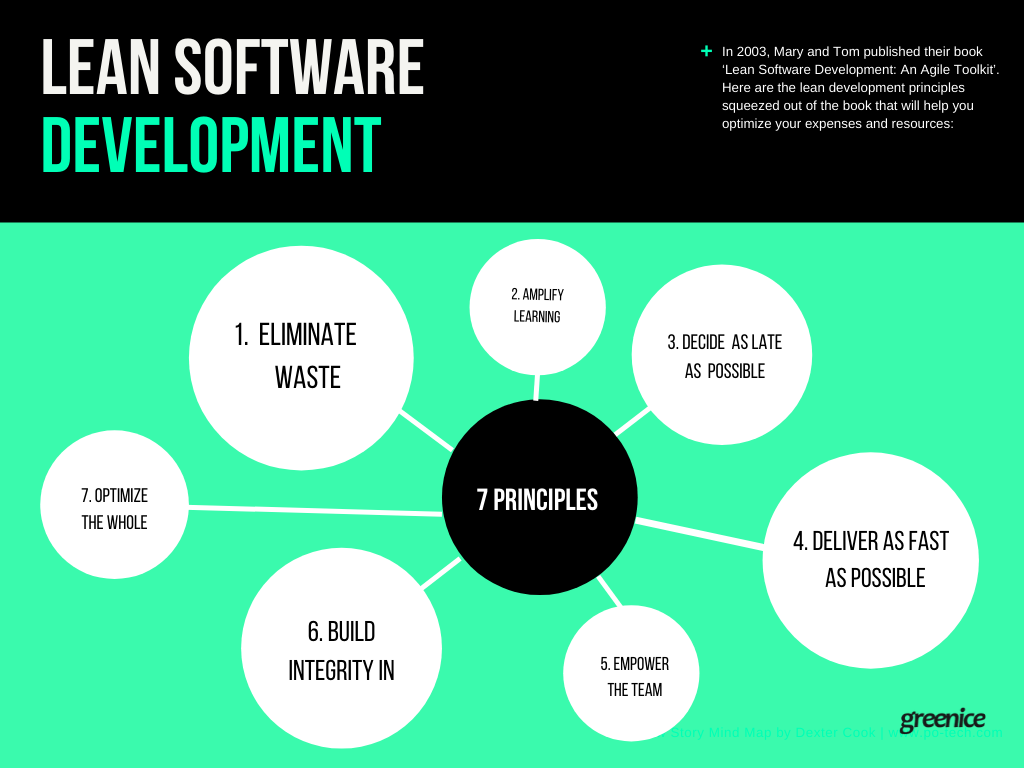
1. Eliminate waste
This is a fundamental principle of lean software development and it manifests delivering only what adds real value to the customers. Mary and Tom suggest getting rid of all waste that distracts the user’s attention, makes the system bulky or eats into your budget without paying back.
There are 7 types of waste in software development that should be thrown away:
- Partially Done Work. When the customer requires an urgent feature and the team is forced to leave the current work only halfway finished and switch to the new task, the undone work becomes a waste. ‘Hold-on’ features often create ‘frozen’ parts of code that may clog the rest of the system code, create bugs, and make maintenance harder.
- Extra Processes. These are processes that add no value. For example, wasting time writing documentation nobody reads or having long and unproductive meetings.
- Extra Features. It relates to the MVP concept. You do not need all the features at once so the best waste-reduction practice is to avoid features that the product can function without.
- Task Switching. Simply focus on one thing at a time to avoid distraction. Waiting. Bureaucracy, poor planning, sudden changes, and delays while waiting for the approval of other people create costly bottlenecks.
- Handoffs. A long or complex communication process and data migration reduce efficiency.
- Defects. With complex software development, bugs and mistakes are inevitable, but they can be reduced with thorough QA testing and code reviews.
It’s difficult to recognize waste that reduces efficiency and sucks your budget. Use retrospectives to identify bottlenecks early and eliminate even the slightest waste from the process.
2. Amplify learning
Learn as you go, from iteration to iteration, use new practices, and enhance the process.
3. Decide as late as possible
Critical decisions and hardcoding cost a lot, so try to give the green light to developers only when you’ve proven your idea by testing prototypes and collecting feedback from users.
4. Deliver as fast as possible
Your competitors do not rest, and the market changes fast. Success is achieved by launching the product early. Don’t waste time demanding perfection. Test software in the wild as soon as possible, get reviews from users, and make changes quickly. However, do not push developers to code faster. Instead, prioritize tasks and let the tech team decide what to do first and optimize their work ‒ thereby avoiding bottlenecks that waste time.
5. Empower the team
If you regard developers as monkey coders or voiceless executives, you risk having delays in development and rework. Building your development team, choose those who are able to propose their vision, and generate ideas. Incentivize the development team to share ideas on tech solutions and work processes, and respect their experience and knowledge. In many cases, trust must be established in the team. Committed teams work with more enthusiasm and effectiveness.
6. Build integrity in
Look at the product as a whole. Do not neglect thorough testing to keep the application integral and minimize the inconsistencies.
7. Optimize the whole
Mary and Tom define two vicious cycles. The first is when developers are pressed to code faster to deliver the necessary features ‘yesterday,’ but not given the time for quality assurance. This, in turn, creates many defects that must be eliminated ASAP. Thus, the pressure never ends in an endless loop.
The second cycle is testing under pressure. When testers are overloaded, they miss bugs which, when not fixed, create even more bugs.
The goal is to optimize the workload of all departments.
4. Hire Remote Employees
It is great to have a creative design office with a coffee machine and a ping pong table where a team of talented employees can share the space. But when you bootstrap a startup, hiring local employees and paying rent is one of the biggest expenses.
The advantages of remote work are well explained with the following tweet:
Many companies — Basecamp, GrooveHQ, Zapier, Buffer among them — started using remote teams from the get-go and stuck to this work style even after they became flush with cash.
The main lessons we learn from their example are to hire slowly and pay attention to people’s values. Workers should be dedicated to common success, they should have good interpersonal and communication skills, they should be self-motivated, and they should work from home or the coffee shop. It is important to create a company’s inner culture and encourage team spirit.
“Having folks who cared about the same stuff as we did make it a lot easier to gel as a team. I also think you need to hire slowly and purposefully. If you try and scale up really fast where you’re doubling every couple of quarters, doing that remotely feels like it would be impossible. The other thing that’s absolutely critical is communication, regardless of what tools you use.” - says Wade Foster, Zapier’s co-founder.
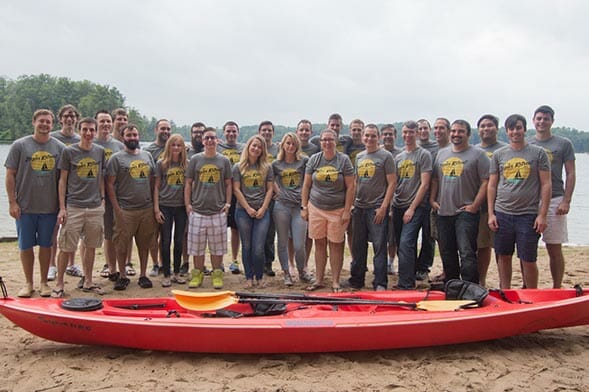
The founder of Buffer, a bootstrapped SaaS, also embraces the idea of a distributed team that meets together only three times a year to work together for a week or two and the rest of the time work remotely. Time zone difference is the biggest fear of startuppers when they consider hiring a remote team. Buffer, however, perceives this as an advantage:
“We have almost a million users and we reply to 50% of emails within 1 hour and 75% within 6 hours. We do this with a Happiness Hero team of just 3, and we couldn’t achieve this level of service without being spread across multiple time zones. Time zones are a huge help for our development cycle too - with engineers in the US, UK, and Asia, we literally never stop coding.” - says Joel Gascoigne, a co-founder and CEO of Buffer.
5. Outsource Development
Hiring remote workers can be a long process. First, you need to interview people whose competence can be proven only in months. Then you have to create a corporate culture that has them all sticking to the company values, rules, and schedule. Moreover, they need to find a common language and get on well — creating a smooth working environment. It all takes time!
Contracting an outsourcing development team has certain risks, as well as benefits. The benefits (quite similar to the benefits of a remote team) are:
- You get an integral team that already works together and the members understand each other’s duties and skills.
- You don’t need to pay for office space and equipment
- You get access to the world’s best talent for less money compared to building an in-house team. Add to this almost no hiring costs.
- You can painlessly expand or zoom in on the team, depending on the current task. An outsourced web development agency can quickly augment the team with necessary developers for your project at peak periods and call them off during idle times. Eastern Europe (namely Ukraine) is one of the most alluring areas because it has a large pool of highly professional developers at competitive prices.
Wrapping Up
Our development team has been working with startups from all over the world since 2007, helping them to create outstanding and profitable solutions in Healthcare, eCommerce, Education, and other spheres. We use the best practices in development to optimize our efforts and deliver timely solutions using the highest quality of code.
Hopefully, this article gave you a spark for the next action. If you’re still not sure how to start a SaaS business and which steps to take right now, we are here to discuss your questions and come up with an estimate for your project.
Take an action — get an estimate for your startup today!
Contact UsRate this article!
5

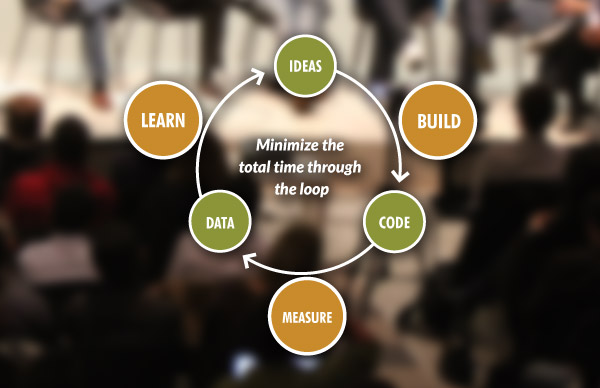
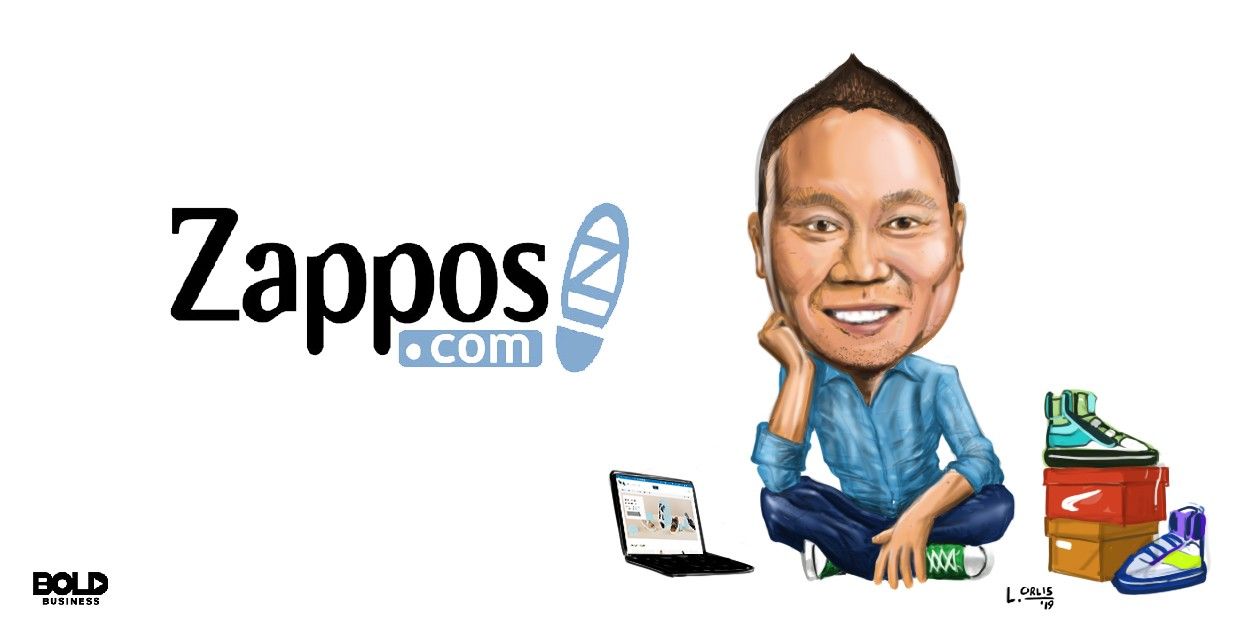
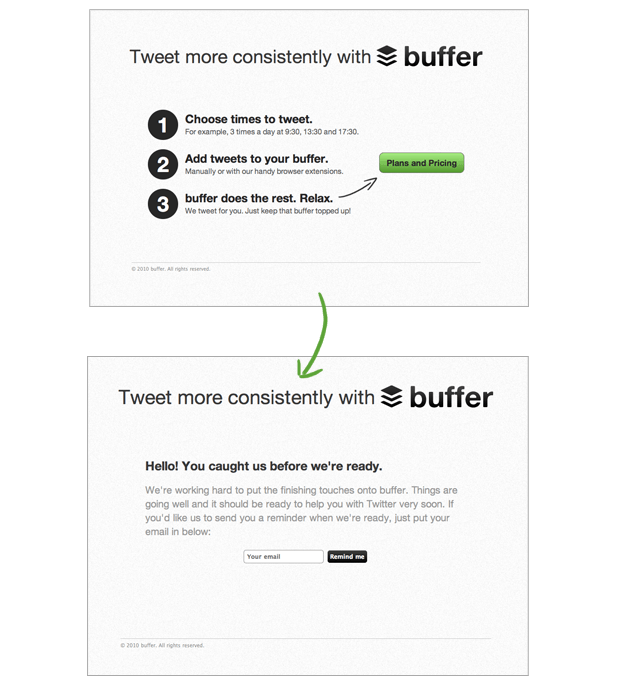
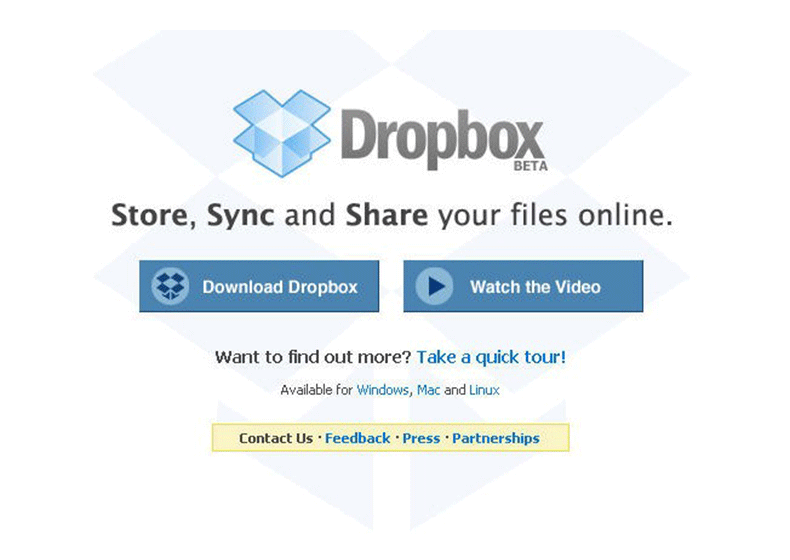







 Sign in with Google
Sign in with Google
Comments (0)